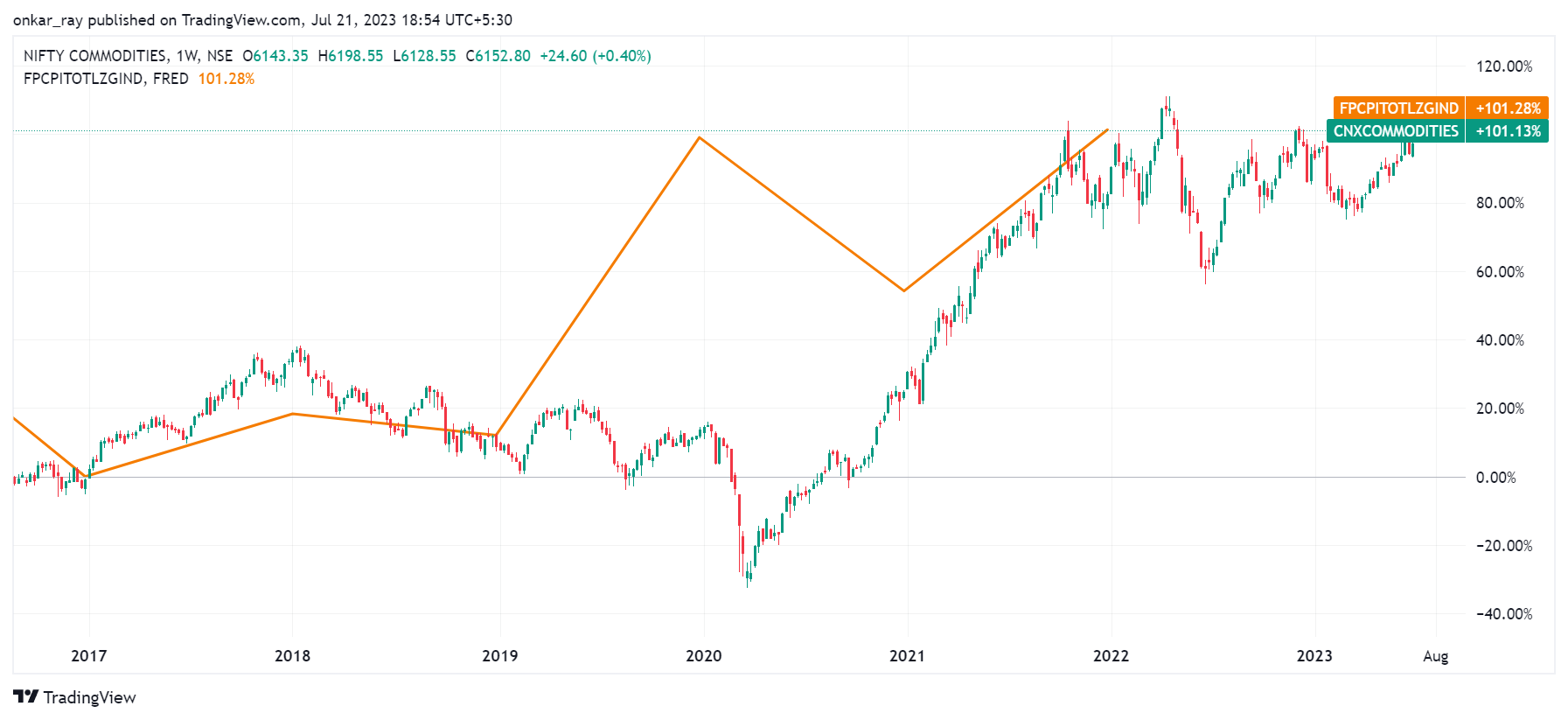Commodity SECTOR IN INDIA (Major Macroeconomic Factors)
Macros affecting the commodity sector in India
The commodity sector in India is influenced by various macroeconomic factors, such as inflation, exchange rate, interest rate, GDP growth, fiscal deficit, trade balance, and global commodity prices. These factors affect the demand and supply of commodities, as well as their price volatility and risk-return profile.
Inflation
One of the major macroeconomic factors affecting the commodity sector in India is inflation. Inflation is the general increase in the prices of goods and services over time. Inflation erodes the purchasing power of money and reduces the real income of consumers and producers. Inflation also affects the cost of production and transportation of commodities, which impacts their profitability and competitiveness. Inflation can be measured by various indices, such as the Wholesale Price Index (WPI), the Consumer Price Index (CPI), and the GDP deflator.
According to a study by Ch Murthy Chodi setty and Raja Babu (2018), there is a positive relationship between inflation and commodity futures volatility in India. They found that higher inflation leads to higher uncertainty and risk in the commodity markets, which increases the volatility of commodity prices. They also found that different commodities have different sensitivities to inflation, depending on their nature and usage. For example, agricultural commodities are more affected by inflation than industrial commodities, because they have a higher share of input costs in their production.
Exchange rates
Another important macroeconomic factor affecting the commodity sector in India is the exchange rate. The exchange rate is the price of one currency in terms of another currency. The exchange rate affects the competitiveness and profitability of exporters and importers of commodities, as well as their hedging strategies and risk exposure. The exchange rate also affects the domestic demand and supply of commodities, as well as their international price transmission.
The dollar index is one of the macroeconomic factors which affects the Indian Stock Markets greatly. Investors should note that there is an inverse relationship between the dollar index and the Indian stock market (ELM, 2021). A stronger dollar makes Indian exports more expensive and imports cheaper, which reduces the trade balance and lowers the demand for domestic commodities. A weaker dollar makes Indian exports cheaper and imports more expensive, which improves the trade balance and increases the demand for domestic commodities.
Other macroeconomic factors that affect the commodity sector in India are interest rate, GDP growth, fiscal deficit, trade balance, and global commodity prices. Interest rate affects the cost of borrowing and investing in commodities, as well as their opportunity cost and discount rate.
GDP growth reflects the overall economic activity and income level, which affects the demand and supply of commodities.
Fiscal deficit measures the gap between government revenue and expenditure, which affects the public debt and borrowing requirement, as well as the fiscal stimulus and monetary policy stance.
Trade balance measures the difference between exports and imports of goods and services, which affects the foreign exchange reserves and current account position.
Global commodity prices reflect the international demand and supply conditions, as well as the geopolitical events and environmental factors that affect the production and consumption of commodities.
In conclusion, macros affecting the commodity sector in India are complex and interrelated. They have significant implications for the performance and risk-return profile of commodity investors and traders. Therefore, it is important to monitor these factors regularly and analyze their impact on different commodities using various tools and techniques.



